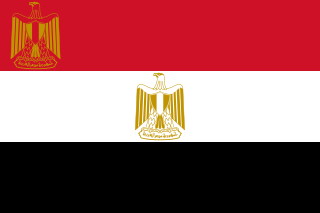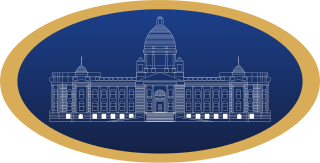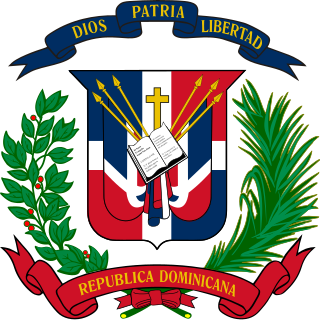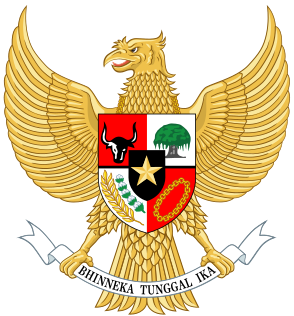
The Constitution of the State of Vermont is the fundamental body of law of the U.S. state of Vermont. It was adopted in 1793 following Vermont's admission to the Union in 1791 and is largely based upon the 1777 Constitution of the Vermont Republic which was ratified at Windsor in the Old Constitution House and amended in 1786. At 8,295 words, it is the shortest U.S. state constitution.

The Constitution of the Irish Free State was adopted by Act of Dáil Éireann sitting as a constituent assembly on 25 October 1922. In accordance with Article 83 of the Constitution, the Irish Free State Constitution Act 1922 of the British Parliament, which came into effect upon receiving the royal assent on 5 December 1922, provided that the Constitution would come into effect upon the issue of a Royal Proclamation, which was done on 6 December 1922. In 1937 the Constitution of the Irish Free State was replaced by the modern Constitution of Ireland following a referendum.

The President of the Arab Republic of Egypt is the head of state of Egypt. Under the various iterations of the Constitution of Egypt, the president is also the Supreme Commander of the Armed Forces and head of the executive branch of the Egyptian government. The current president is Abdel Fattah el-Sisi, in office since 8 June 2014.

The President of the Republic of Hungary is the head of state of Hungary. The office has a largely ceremonial (figurehead) role, but may also veto legislation or send legislation to the Constitutional Court for review. Most other executive powers, such as selecting Government ministers and leading legislative initiatives, are vested in the office of the Prime Minister instead.

The National Assembly is the unicameral legislature of Serbia. The assembly is composed of 250 proportionally elected deputies by secret ballot, on 4 years term. The assembly elects a president (speaker) who presides over the sessions. The current president of the national assembly is Maja Gojković since 23 April 2014.

The Congress of the Dominican Republic is the bicameral legislature of the government of the Dominican Republic, consisting of two houses, the Senate and the Chamber of Deputies. Both senators and deputies are chosen through direct election. There are no term limits for either chamber.

The State Constitution of the Republic of Indonesia of 1945 is the basis for the government of Indonesia.

The President of the Republic of Indonesia is the head of state and also head of government of the Republic of Indonesia. The president leads the executive branch of the Indonesian government and is the commander-in-chief of the Indonesian National Armed Forces.

A constitutional referendum was held in Russia on 12 December 1993. The new constitution was approved by 58.4% of voters, and came into force on 25 December.

A referendum on the direct election of the President was held in France on 28 October 1962. The question was whether to have the President of the French Republic elected by direct popular vote, rather than by an electoral college. It was approved by 62.3% of voters with a 77.0% turnout. However, the reform was controversial because it strengthened the executive at the expense of Parliament, and because of the disputed constitutionality of the procedure used.

The Vice President of the Republic of Indonesia is the first in the line of succession in the Republic of Indonesia.

Vice President of Gabon is a political position in Gabon. It existed from 1961 to 1975 and from 1997 to 2009, and since 2017 the post has been held by Pierre Claver Maganga Moussavou.

Presidential elections were held in Brazil on 15 January 1985, the last to be held indirectly through an electoral college, and the last to be held under the military regime. The electoral college system was put in place so that the military elite that controlled the government could secure the election of the candidate chosen by the High Command of the Armed Forces as President. However, in 1985, due to the process of negotiated transition to democracy that started in the late 1970s, the politicians in the electoral college were placed under no coercion, and were allowed to choose the president of their choice.

General elections were held in the Dominican Republic on 16 May 1934. Two years earlier, the Dominican Party of President Rafael Trujillo had been declared the only legally permitted party. However, the country had effectively been a one-party state since Trujillo assumed office in 1930.

Constitutional Assembly elections were held in the Dominican Republic on 1 June 1929. The role of the Assembly was to review and amend certain articles of the constitution, which resulted in an amendment to repeal the ban on presidential re-elections. Voter turnout was low and in some places ballots were not even counted.

Constitutional Assembly elections were held in the Dominican Republic on 16 December 1941. The role of the Assembly was to review and amend certain articles of the constitution.

Constitutional Assembly elections were held in the Dominican Republic on 8 December 1946. The role of the Assembly was to review and amend certain articles of the constitution.

Constitutional Assembly elections were held in the Dominican Republic on 13 November 1955. The role of the Assembly was to review and amend certain articles of the constitution.














